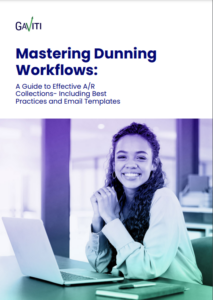Late invoice payments have the potential to create a snowball effect for your business that you want to avoid at all costs. Not receiving timely payments at regular periods makes it difficult for you to pay your vendors and suppliers on time as well as make payroll. If late invoice payments cause you to miss loan repayments, it can impact your credit, and, if it continues, can land you in court. Employees who aren’t paid on time will find work elsewhere, making it hard to fulfill future customer requests, and send and collect invoices.
Your business must do everything it can to avoid these types of scenarios and ensure you receive timely payments from customers.
Understanding the Causes of Late Payments
Before you search for solutions to late payments, it’s important to understand that the vast majority of customers intend to pay their invoices on time. They simply run into a number of typical accounts receivables challenges on the way.
These include:
- Lack of a unified process. In many traditional collections teams, each individual collector develops their own process for managing invoices. They often each have different priorities in terms of the types of accounts they decide to collect from, or amounts, or different levels of risk.
- They don’t receive a reminder prior to the invoice due date to make a payment. Most traditional A/R teams have a reactive approach to following up with late payments from customers. They wait until they are overdue, send a late payment warning, and then start collections calls with customers perhaps a week or two weeks after the invoice is due.
- Customers don’t have a system for keeping track of their invoices. Many of your customer’s finance teams are overwhelmed from trying to manually keep track of multiple invoices for goods and services they receive from your business every day. These manual processes are inefficient, lead to errors, and consume resources that could be applied elsewhere in your business.
- It’s difficult for them to pay. They may have run into unexpected financial issues, and can’t make all of the payment upfront. They may have a dispute and refuse to pay in full until the dispute is resolved. Or they may simply want to have different types of payment options beyond checks and credit card payments.
- They were extended additional credit but were not creditworthy. It’s important to receive regular risk assessments for your customers to verify their creditworthiness and extend credit to them based on their payment history, not out of courtesy. Ideally, customer credit applications should be streamlined to focus on only the most important information to ensure they are quick and accurate.
5 Methods to Reduce Late Invoice Payments
While late payments are inevitable for any business, there are steps you can take to manage delinquent accounts. Many businesses rely on an A/R management solution to automate the process and increase the likelihood of timely payments.
- Standardize the A/R process. When the entire A/R team uses the same process for collections, it’s more efficient because everyone is working together toward the same goals and systems. You can also ensure that best practices are implemented. For example, with an A/R management solution, you can easily automate dunning workflows to send different messages to different customers based on their geography, industry, or customer risk. Each workflow can contain important information such as past invoices, payment terms and methods, and due dates of all invoices. Clear communications and a more efficient process facilitate timely payment and free up your resources so that your A/R team can spend its energy on other tasks.
- Automate payment reminders. Since many companies have an established date for paying invoices, automating late payment reminders to reach customers before this date strongly increases the likelihood of getting paid. An A/R software automation solution can set up automatic reminders for payments that are scheduled close to the same date the customers schedule their payments, increasing the likelihood of timely payments. This proactive approach also reduces the need for collections calls, a reactive and stressful approach that can damage customer relationships.
- Offer different payment options. You should offer your customers different payment options, such as credit card, AHC and more through different leading payment providers. You should also provide the option to pay in installments, a discount for payment paid upfront and in full, and a promise-to-pay to assist in avoiding delayed payment.
- Streamline the credit process. Monitoring and limiting customer credit to customers with good credit risk helps to avoid late invoice payments, write-offs, and customer debt, all of which impact your cash flow. Having a streamlined and automated process for this eliminates the need for manual credit checking which is time-consuming and resource intensive.
- Streamline the process for managing disputes and deductions. The traditional dispute process involves a series of manual steps that need to be verified, often at multiple times in the process. Streamlining it with an A/R automation platform consolidates the process by centralizing data and making it visible to everyone who needs it, facilitating greater collaboration and quicker resolution of disputes.
Get More Tips to Improve Your Dunning Emails 
This ebook will help you navigate complexities and unlock opportunities to yield more cash from your current revenue.
Download the EbookHow Gaviti Proactively Manages Late Invoice Payments
Streamlining the A/R management process is the key to avoiding late payments and ensuring that your A/R team has the time and resources for other important tasks such as taking advantage of investment opportunities and working towards its business growth. By applying the data received in Gaviti’s invoice-to-cash A/R management solution, you can streamline and automate different essential components of the A/R process, connecting to any and multiple ERPs with minimal need for IT support.
These components include:
- A/R management. Prioritize collections based on important data the platform gathers and centralizes to focus on high-value and high-risk accounts so that you can optimize your collections efforts as a team. Automate as many elements of the process as possible, including dunning workflows, payment reminders, credit applications, payment reconciliation, the routing of disputes and deductions, and alerts and reports to the relevant stakeholders as needed.
- Collections Analytics. Centralize data in one point to deliver greater visibility not only to the A/R team but other departments such as procurement, human resources, sales, and logistics to foster greater collaboration and efficiency in your collections efforts.
- Cash Application. Ensure accurate invoice reconciliation through multiple banks with Gaviti’s customer payment portal. Get real-time reporting and analytics to quickly understand where any discrepancies or unapplied cash lies.
- Dispute Management and Deductions. Track and categorize different types of disputes so that your finance team can quickly identify and learn how to handle different disputes, such as whether it is based on unauthorized changes in the invoice versus disputes on taxes or fees.
- Credit Monitoring and Management. Set alerts based on specific criteria or when a customer reaches a credit threshold to minimize unpaid or late invoices that can lead to customer debt. Track key metrics such as DSO, credit risk exposure, and credit utilization and apply them to automatically set credit limits based on creditworthiness and customer risk.
- Self-Service Payment Gateway. Offer your customers a range of payment options that include ACH transfers, electronic wallets, and fully-compliant customer payment gateways such as BlueSnap and Stripe to make it easy for them to pay and increase the likelihood of timely payments.
Want to learn more about how you can reduce late payments from your customers? Contact us and Speak to a Specialist.























